12 Tips to Raise Your Score on the Duolingo English Test
Are you going to take the Duolingo English Test? These tips will help you improve your score immediately.
To go deeper with your preparation, be sure to check out our other popular articles: Duolingo English Test Ultimate Guide and How to Practice for the Duolingo English Test.
Let’s jump into the tips!
Table of Contents
- Don't pick answers that "seem" correct.
- Learn templates.
- Write and speak for the entire length of the question.
- Save time to proofread your responses to writing questions.
- For Fill in the Blanks and Read and Complete, check that your answers make sense even if the letters fit.
- In Listen and Type questions, look out for contractions and questions.
- Save time to review the conversation before going to Summarize the Conversation.
- Make sure it’s easy to hear you.
- In Read and Complete questions, look for repeated words.
- Learn how to write strong paragraphs.
- Start your preparation by focusing on picture description.
- Don’t just answer practice questions. Make sure they are scored and you get feedback.
1. Don't pick answers that "seem" correct.
In 3 question types — Read and Select, Interactive Listening, and Interactive Reading — Duolingo will give you options that seem correct but are not!
For example, in "Read and Select" questions, you have to decide whether a word is real. In the example below, "somether" looks and sound similar to the words "something" and "other", but it is not a real word!

This is why for Read and Select questions, you should only select the words that you are confident are real. For more tips, check out our masterclass about this question type:
In "Interactive Listening" and "Interactive Reading" questions, Duolingo will give you options with only slight differences. You can see how similar the options can be in the example below. They’re all about a review session or study group, which are the same thing.
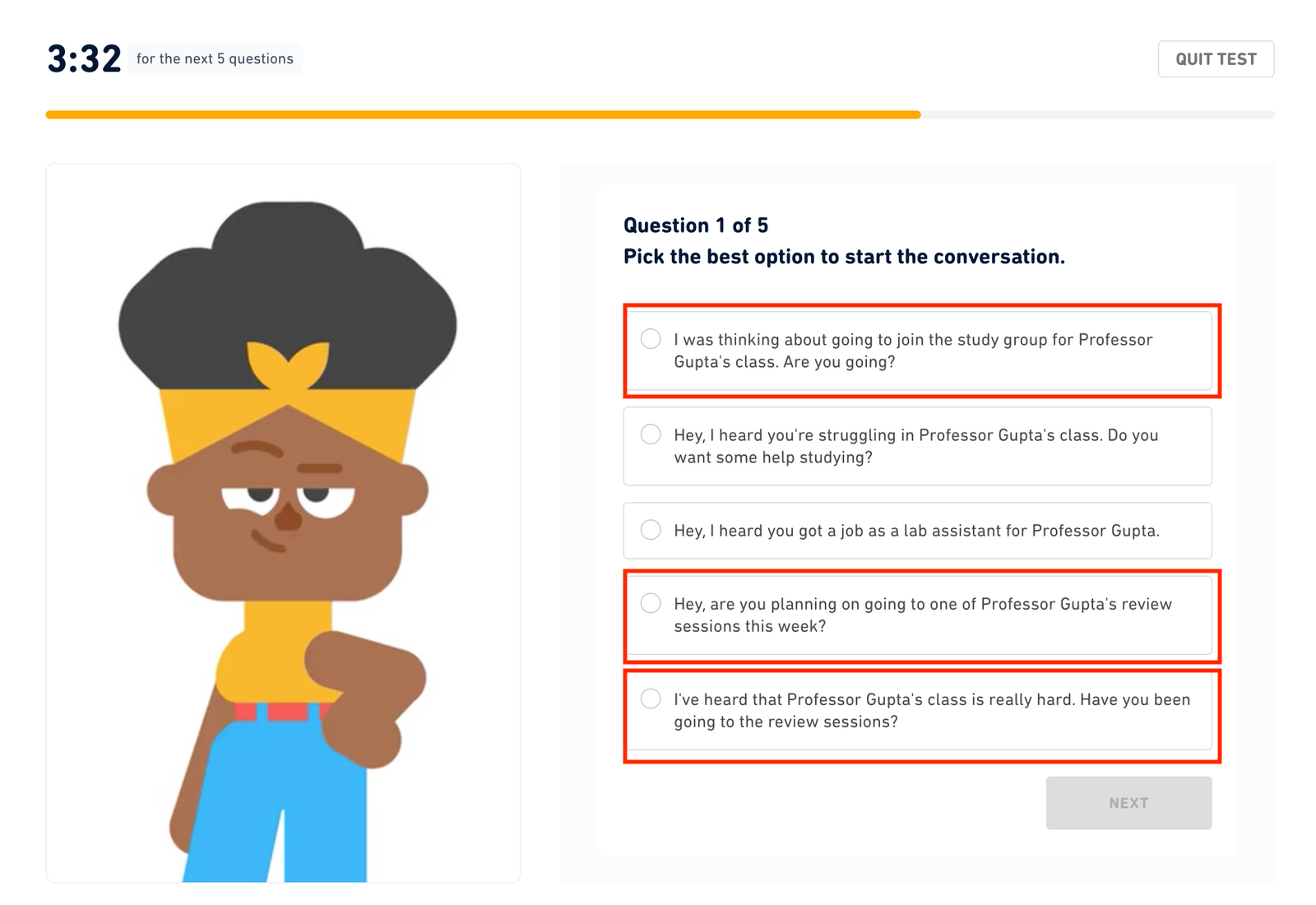
For multiple choice questions, you should be sure to evaluate every option, and not just select the first one that seems correct. There may be a better option. I explain more in this lesson:
2. Learn templates.
Templates make it easier to know what to write or say in your response. That way, you can focus on your ideas, grammar, and vocabulary and less on how to structure your response.
The two most useful templates are for Write About the Photo and Summarize the Conversation. This is because for each of these questions, there is one template that always works.
In contrast, for other writing and speaking questions, you have to respond to the prompt you are given. Different prompts require different kinds of responses, so you need to learn more templates.
Below is a playlist with high-scoring templates that you can confidently use on the test, starting with Write About the Photo and Summarize the Conversation. We also have an article: The Best Templates for the Duolingo English Test.
3. Write and speak for the entire length of the question.
For questions in which you need to write or speak, you are given a maximum amount of time to respond. Use all of it. Longer answers generally get higher scores.
There is no benefit to answering questions quickly. Each question has its own timer, so going faster on one question does not give you more time on other questions nor does it get you a higher score.

The only exceptions to this are the Interactive Reading and the Interactive Listening sections, where the entire section is timed and you have to answer multiple questions. This means that going fast on some questions will leave you with more time for later questions.

4. Save time to proofread your responses to writing questions.
The Duolingo English Test moves quickly. So, during the test, people tend to write quickly, which causes them to make mistakes. This is why it’s crucial that you proofread your responses before time runs up. Fixing misspellings, typos, missing words, and other obvious mistakes is an easy way to raise your score.
So, for the 5 minute Writing Sample question, you should write for about 4 minutes and proofread for about 1 minute.
While you are proofreading, just fix the obvious mistakes. Don’t spend time trying to remember how to conjugate a verb or which preposition is correct.
This video explains the 3 most common, easiest to fix mistakes that test takers make on the DET:
5. For Fill in the Blanks and Read and Complete, check that your answers make sense even if the letters fit.
A very common mistake on Fill in the Blanks and Read and Complete is that students will fill in letters to create a real word, but they won't check that the word they entered actually makes sense in the passage.
For example, in this Read and Complete question, the student completed all the words:
However, many of the words were wrong, even though they fit:

By taking time to check that their answers made sense in the passage, the student was able to get full marks:
Here is full lesson about this tip:
6. In Listen and Type questions, look out for contractions and questions.
Contractions are when we combine two or more words into one word. For example, we can combine does and not to make doesn't or we and are to make we're.
Contractions make it easier to speak, which is why they often appear in Listen and Type questions. If you hear a contraction, you need to include it in your answer in order to get full marks.
You also need to look out for questions. Questions require a question mark (?). Usually, questions also flip the subject and the verb. For example: You are going to the store becomes Are you going to the store? if we want to form a question.
However, in spoken English, we often don't flip the subject and the verb (for example: You are going to the store?) Rather, we change how we say the sentence, adding an upward inflection at the end. Sometimes, these types of questions can also appear in Listen and Type questions.
It will be easier to understand how to listen for questions by watching this lesson, that way you can hear actual examples:
7. Save time to review the conversation before going to Summarize the Conversation.
At the end of an Interactive Listening question set, save ~30 seconds to scroll up and review the scenario and conversation and note the key information you'll need for your summary. (During the conversation, it can also be useful to scroll up and review the scenario and what was discussed previously).
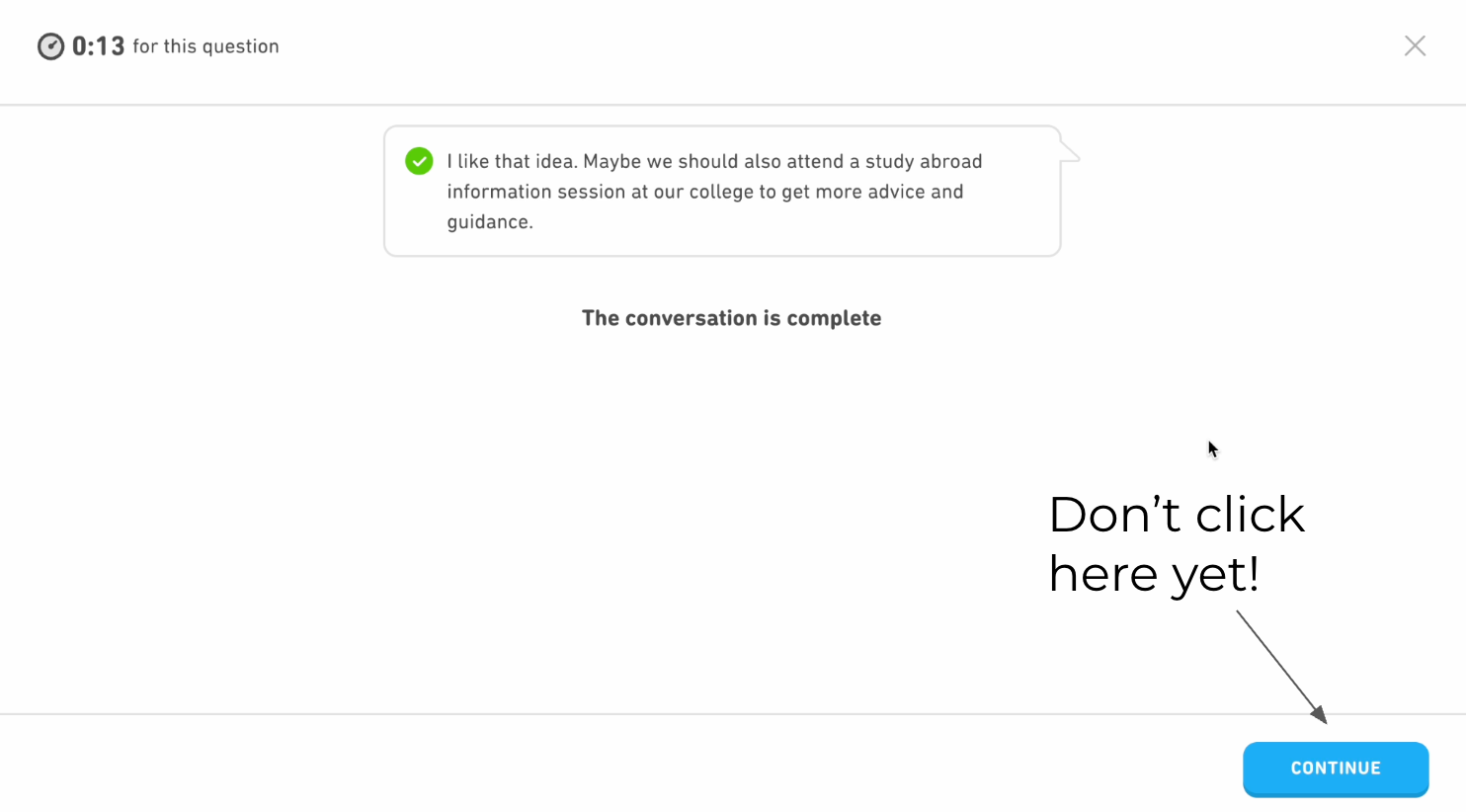
While reviewing, you should aim to answer these 4 questions:
- Who was in the conversation?
- Why did we talk?
- What did we talk about?
- What are 2 new pieces of information revealed during the conversation?
You can then easily use that information in our Summarize the Conversation template which you can learn below:
8. Make sure it’s easy to hear you.
There many speaking questions on the DET. If it is difficult to hear your voice in the recordings, you will get a lower score, even if you speak well. You should:
- Use a good microphone: If the microphone on your laptop or computer isn’t good, ask to borrow one from a friend or use an external microphone. However, you cannot use a microphone on a pair of headphones because headphones are not allowed on the DET.
- Take the test in a quiet place: Background noise will make it more difficult to hear you.
- Speak loudly: You should pretend like you are speaking to someone across the room, not someone sitting close to you. This will ensure that you are easy to hear.
👉 For more speaking tips, check out our other article: Ultimate Guide to Speaking Questions on the Duolingo English Test as well as check out the lesson below:
9. In Read and Complete questions, look for repeated words.
Take this Read and Complete question as an example:

Two of the words you needed to fill in (lion and monkey) appeared as completed words in the passage. In other words, you were practically given 2 answers!
Incomplete words can also be repeated, like we see with or in this question:

10. Learn how to write strong paragraphs.
Although you should learn templates, Duolingo uses tons of different questions on the DET, and they are constantly adding new ones. To make sure that you are prepared no matter the question, you should learn how to write strong paragraphs.
Knowing how to write strong paragraphs will not only serve you well on the DET, but also during your studies and your career!
11. Start your preparation by focusing on picture description.
We don't have much experience in ordinary life with describing photos in detail. This means that for most students, the picture description questions on the DET (Write About the Photo and Speak About the Photo) are probably the 2 question types where they can improve the fastest and most quickly raise their score.
We have an entire playlist on YouTube to help you do this (see below). Arno's practice questions and feedback will also help you improve at picture description very quickly.
12. Don’t just answer practice questions. Make sure they are scored and you get feedback.
If you answer a lot of practice questions, but you make the same mistakes again and again, you won’t improve. This is why you need scoring and feedback.
With Arno, you get unlimited practice questions for every question type on the Duolingo English Test for free. On our paid plans, you also get an instant estimated score plus feedback on your grammar and vocabulary. Arno even explains your mistakes to you so that you can learn.
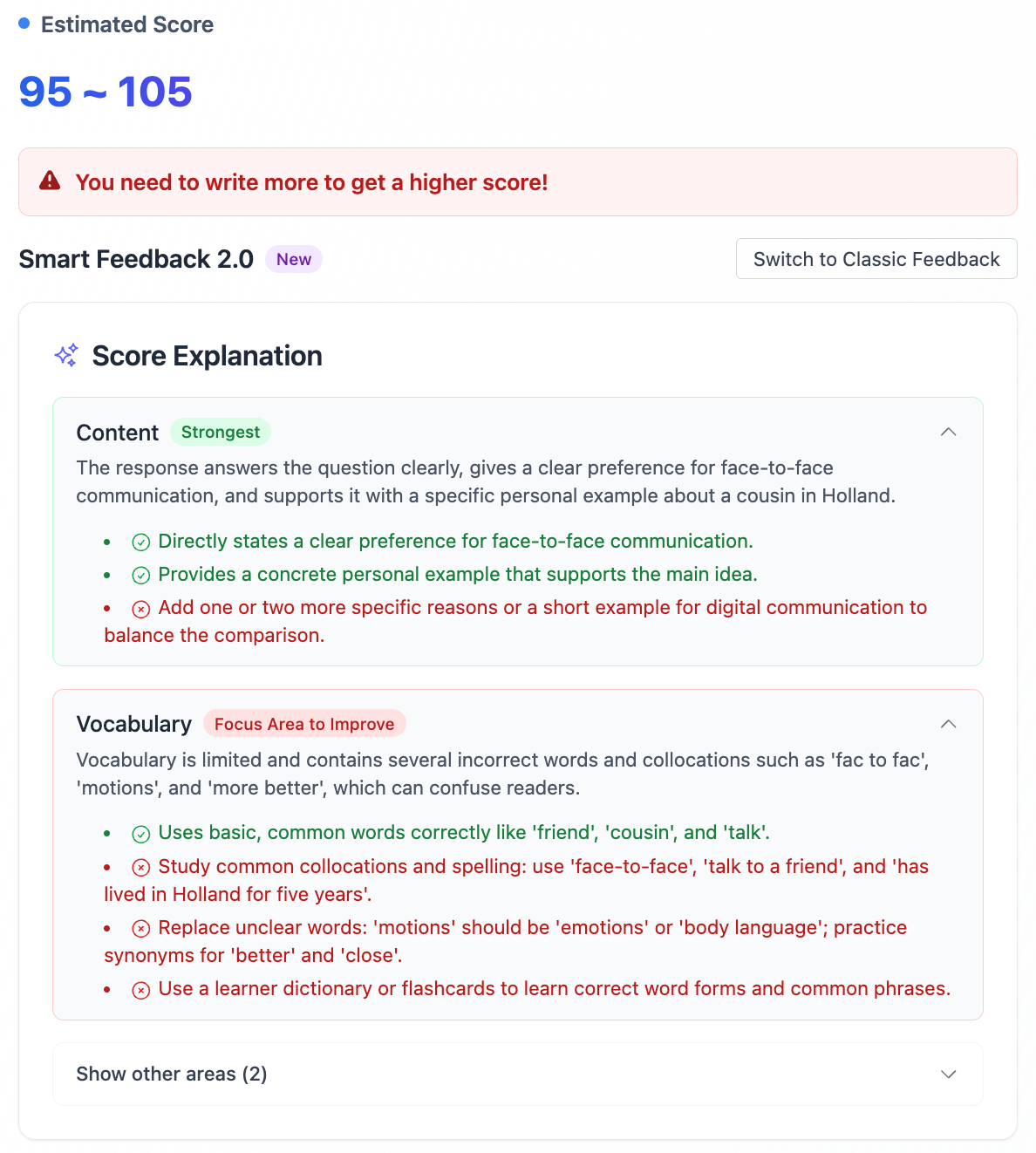
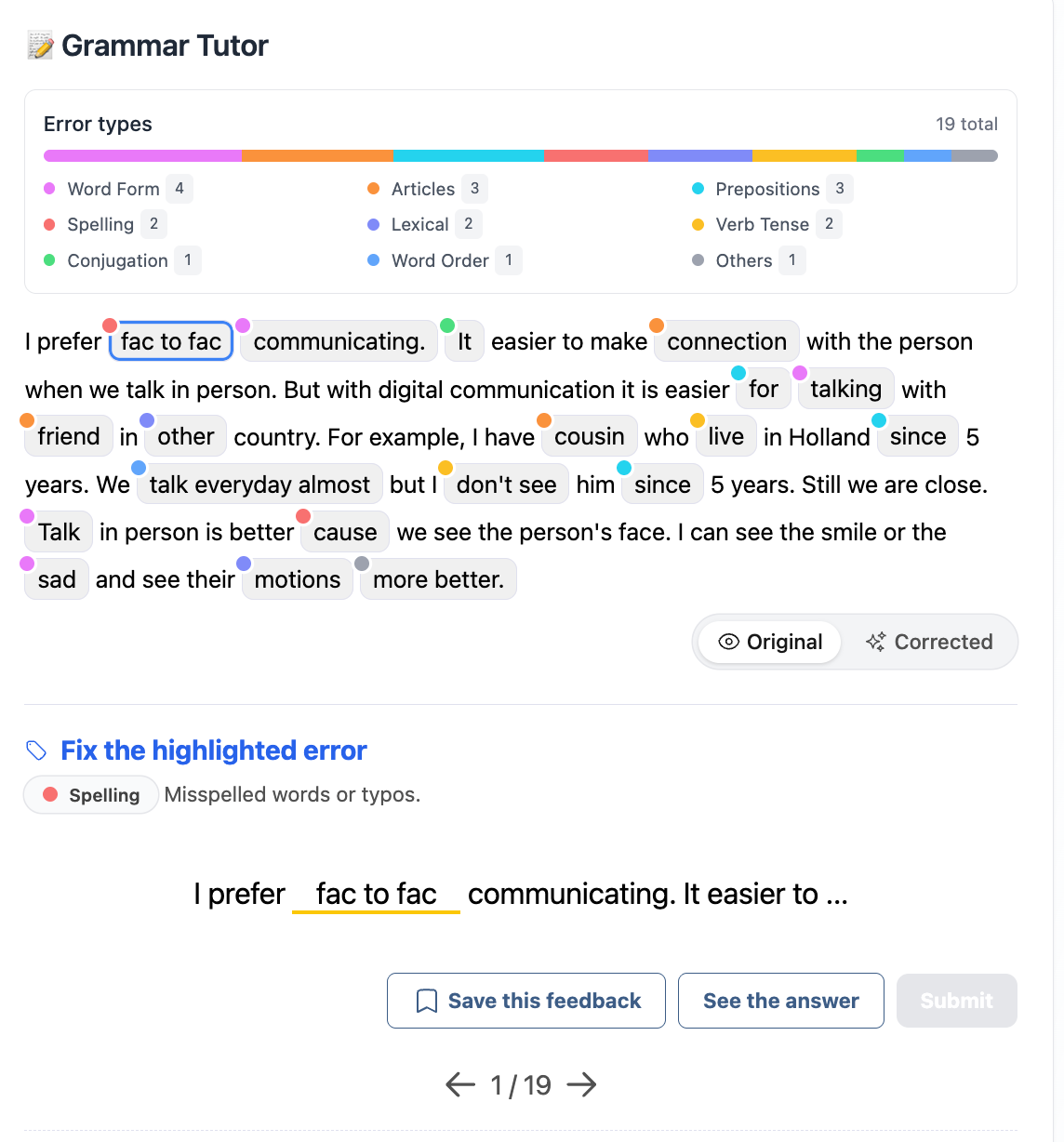
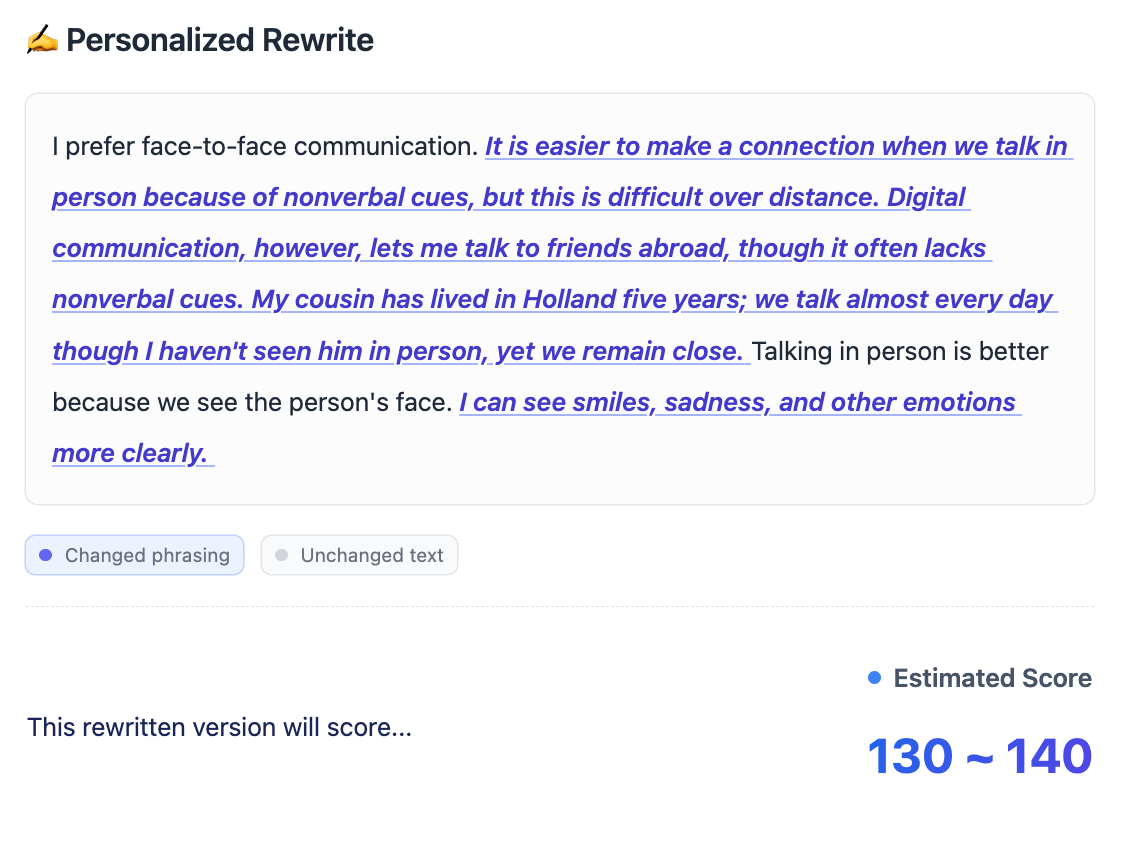
Click the link below to sign up and start practicing in just seconds!
